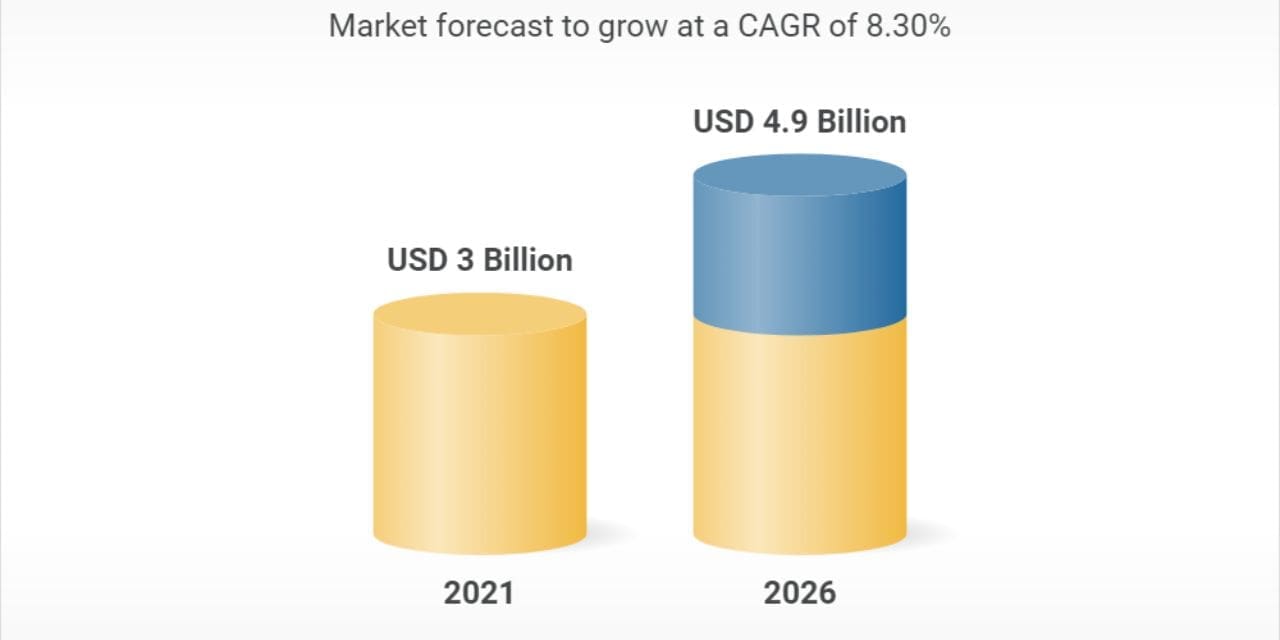The report “Membrane Bioreactor Market by Membrane Type (Hollow fiber, Flat sheet, Multi-tubular), System Configuration (Submerged, External), Application (Municipal Wastewater Treatment, Industrial Wastewater Treatment), and Region – Global Forecast to 2026″, is projected to reach USD 4.9 billion by 2026 at a CAGR of 8.3% between 2021 and 2026. MBR technology is a combination of membrane filtration and biological treatment processes that are widely used for municipal and industrial wastewater treatment. MBR system consist of microfiltration or ultrafiltration membranes such as hollow fiber, flat sheet, and multi-tubular in various configurations. MBR membranes are designed with different polymeric materials such as PVDF, PE, PES, and others. Membranes are selected on the basis of application requirement and membrane characteristics such as pore size (MF/UF), air scour requirements, hydraulic configurations, and membrane tank volume. The use of MBRs for wastewater treatment produces good quality effluents meeting the water quality requirements. Growing demand for advanced wastewater treatment technology for more efficient and high-quality treated water and stringent wastewater treatment regulations are major drivers of the market.
Browse
• 137 Market data Tables
• 44 Figures
• 182 Pages and in-depth TOC on “Membrane Bioreactor Market – Global Forecast to 2026”
Some of the prominent key players are:
- SUEZ (France)
- Kubota Corporation (Japan)
- Evoqua Water Technologies LLC (US)
- Mitsubishi Chemical Corporation (Japan)
- TORAY INDUSTRIES, INC. (Japan)
- CITIC Envirotech Ltd (Singapore)
- Koch Separation Solutions (US)
- ALFA LAVAL (Sweden)
Opportunity: Increasing demand for high-quality effluents
Rising demand for high quality effluent owing to the stringent regulations implemented by various countries on discharge standards is increasing the demand for MBR system. MBR offer superior quality and consistency of the produced effluents by eliminating biological wastes and bacteria, such as E. coli, which are measured to be less than 3 mm. Standards. MBR overcomes the problems associated with poor sludge setting in the activated sludge process, and MBR adoption is increasing globally owing to its efficient performance in compliance with regulations. This creates an opportunity for MBR in various end-use applications in oil & gas, food & beverage, pharmaceutical, municipal, and other sectors.
The hollow fiber membrane type segment is estimated to be lead the MBR market during the forecast period.
Hollow fiber membrane accounts for the largest share during the forecast period owing to its efficient performance, cost effectiveness, and availability. They are highly preferred in municipal and industrial applications of wastewater treatment and are selected on the basis of operating flexibility, effluent wastewater characteristics, and operating costs. Moreover, hollow fiber membranes are also designed in various diameters, pore sizes, materials, and configurations by various manufacturers. These characteristics allows hollow fiber membrane to be used in various end-use industries such as food and beverages, municipal, pulp & paper, textile, and others.

APAC is expected to be the fastest-growing market during the forecast period
Based on region, the MBR market has been segmented into APAC, Europe, North America, South America, and Middle East & Africa. Asia Pacific countries such as China and India is expected to witness high growth, owing to industrialization and growing awareness on water reuse and recycling. Moreover, the introduction of various initiatives, laws, and regulations by government bodies such as environmental protection laws to conserve natural water resources sanitation management are expected to positively impact the MBR market.

